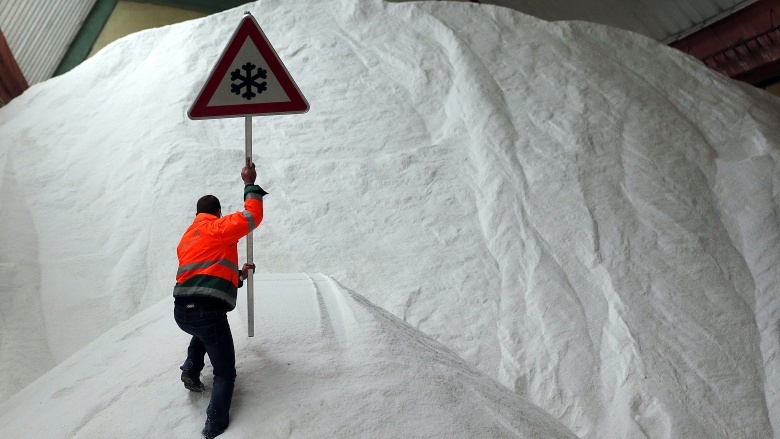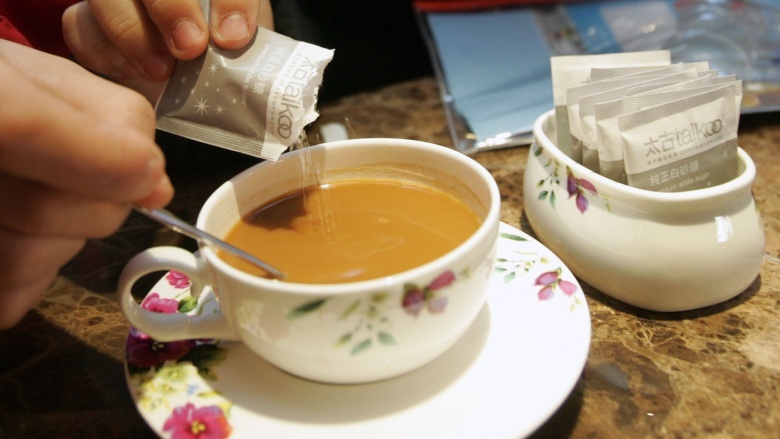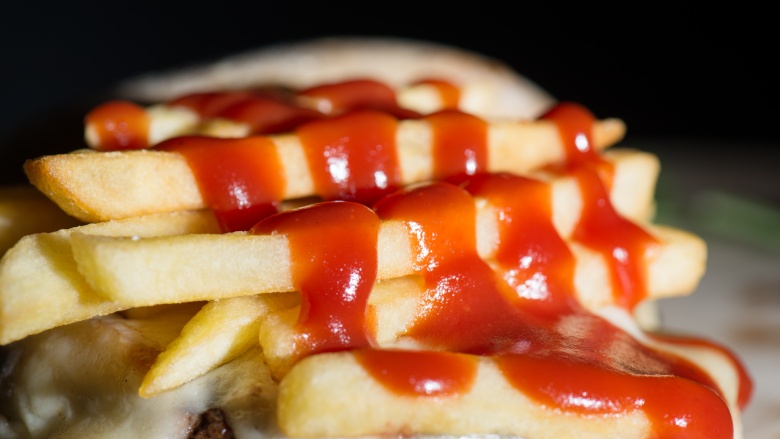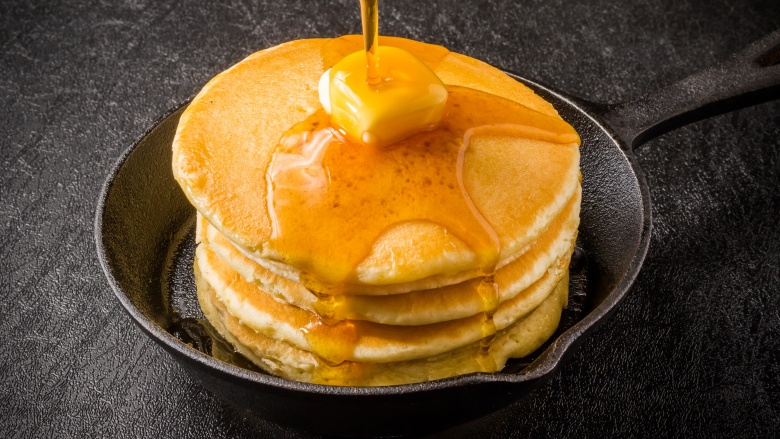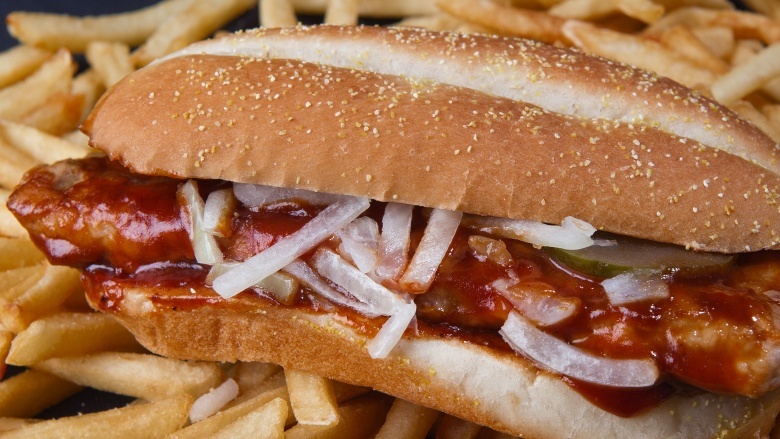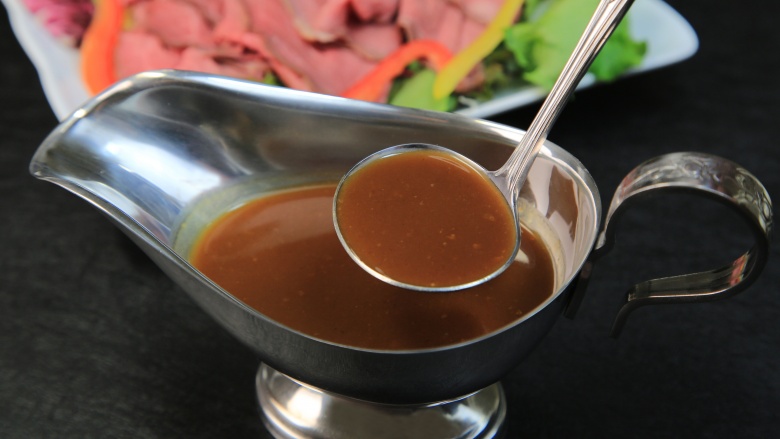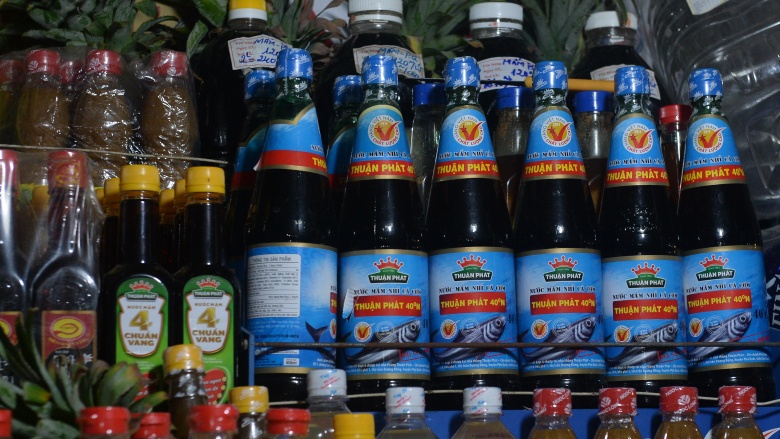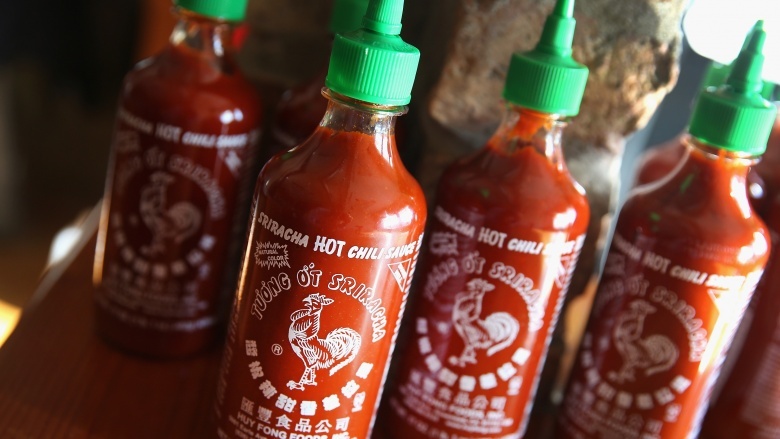Condiments That Are Actually Killing You
Let's be honest. Good food (that doesn't need a little extra something) is either slow or expensive. And since most of us lack both the time and money to do any better, we reach for the sauce. But here's the rub: each portion of sauce that tastes so good could actually be killing you. Not in a sudden cupful-of-botulism kind of way, but more a death-of-a-thousand-cuts kind of way. That's because each of those insignificant smears is but one of thousands you will probably eat this year, and every year afterwards. Let's dive into the chief protagonists in this culinary tragedy...
Salt
The original, best, and first thing people reach for when their food needs something extra, salt is the primordial soup from which nearly all other condiments were born. That's because salt makes food taste good. It does this in three ways: it makes food saltier (duh, but more on that later), it makes it easier for other molecules in the food to be released into the air, adding to the smell of food (a major contribution to our experience of taste), and it suppresses something's bitter taste.
That's all great. But in order to prevent all the extra salt in your system from becoming toxic, your kidneys have to reduce the amount of water and other fluids they remove to keep the salt diluted. Extra fluid means extra volume, and that means higher pressure, putting strain on everything from your heart to your kidneys, and the arteries themselves. Over an extended period of time, this extra pressure can cause kidney disease and failure, hardening and narrowing of the arteries (resulting in further increases of blood pressure), heart attacks, and strokes. But despite this, and because of what salt does to flavor, condiment manufacturers add it in spades. Right along with...
Sugar
Sugar is such a simple condiment that a lot of people wouldn't even think of it as one. Yet it is often found side-by-side with salt on dining tables and in more complex sauces. Adding sugar to food enhances the sweet flavor (again, duh), and because it is full of quick energy that our bodies can use for fuel, the ancient hunter-gatherer deep inside every one of us craves more and rewards us when we get it. That's well and good for a hunter-gatherer for whom sugar was a rare and valuable treat. But it also means that adding sugar is an easy way for food producers to make us crave their product.
The average American consumes around 76 pounds of sugar a year, and the health effects of that are by no means a mystery. Apart from the obvious dental repercussions, when you binge on sugar, your blood sugar level rises rapidly, prompting your pancreas to release insulin, which attempts to balance that level by converting some of it as fat. If your blood sugar level increases too fast, the pancreas can overproduce insulin and potentially drop those levels too far, making you crave sugar again. All this carries risks of diabetes, obesity, and heart problems of various kinds. So what do we get when sugar and salt meet in your favorite toppings? To start with, there's...
Ketchup
Ketchup is basically the condiment industry's poster child. Where there are burgers, there's ketchup. Where there are fries, there's ketchup. Hot dogs, tater tots, eggs, onion rings, hashbrowns (the list is a long one) have all been dressed in red more often than not, and that means it's easy to eat a lot.
Problem is, no matter how many times people tell you ketchup is a vegetable, and even though it does contain high levels of vitamin A and C, a lot of ketchup is not a good thing. Order a burger with large fries on a Friday night, get liberal with the ketchup, and you could be adding over 200 calories to your meal, plus over 2500 milligrams of sodium, putting you way over your daily recommended salt limit. That's without even considering what's in the rest of your meal.
It's well-known that ketchup is red because it's made of tomatoes, but if you value your health, you should see it as a red flag instead.
Mayonnaise
Mayo is the king of condiments: sitting at the top of the sales figures with $2 billion worth being consumed each year in America alone. Mayo is also the daddy of the condiments since it has spawned any number of spin-off condiments like ranch dressing, horseradish sauce, tartar sauce, and Remoulade sauce, not to mention all the variations that are made by adding something extra, like garlic mayo, sriracha mayo, curry mayo, herbed mayo ... there is virtually no limit to the ways you can disguise mayonnaise, so you'll never get bored.
And that's a bad thing. Because, unlike the rest of the stuff in this article (at least, the stuff not made with mayonnaise), mayo isn't just a salt-and-sugar delivery system. It has other ways to kill you too, especially if you're allergic to eggs. The crucial ingredient in mayonnaise that sets it apart from all the rest is the uncooked egg yolk, which brings cholesterol into the equation, not to mention the risk of salmonella if the egg yolk isn't pasteurized first (most commercial mayo is made with pasteurized yolks though).
So if you're still interested in adding a big dollop of mayo to your next sandwich, consider this: mayonnaise contains so much oil, a single tablespoon contains 8 percent of your recommended daily allowance of fat. Now think about that "salad" you put it in the other day and do the math.
Pancake syrup
When you think of pancake syrup, you probably have a mental picture of some smiling Canadians harvesting it from trees. If you look at the back label of the syrup you're eating, however, you might be surprised to find that maple trees fail to feature at all. What you'll likely see instead are the words "corn syrup," and probably also "high fructose corn syrup," which is something of a culinary boogie man, and for good reason.
The fact is that, every day, millions of Americans are saturating their pancakes with a cheap substitute, and putting themselves at risk of obesity, diabetes, heart attacks, and strokes. Long-term health issues aside, there's a very good reason to cut down on the syrup: calories. Just four tablespoons of pancake syrup contain 210 calories. Four tablespoons isn't very much, probably about as much as most people put on one pancake or waffle, so the numbers add up quick when you're too busy sucking down your morning coffee to pay attention to what goes on your waffles.
Barbecue sauce
Barbecue sauce is a bit of a catchall name for a family of sauces that are often also used for marinades, which makes them especially dangerous. Because it would be one thing if it was applied like ketchup, a little on the side for dipping, but it's not. Instead, meat is soaked in it for hours before being cooked, then the sauce is constantly reapplied during cooking until it has reduced down and formed a sticky, sweet, mouth-watering glaze. Which is perfect...if you're trying to make championship ribs.
Unfortunately, because the sauce is constantly being reduced to a glaze on the surface, a much larger quantity of sauce (and everything in it) ends up on the meat. And that includes the salt, sugar, corn syrup (yet another kind of sugar), molasses (even more sugar), and a great big dollop of tomato ketchup (which is — surprise — 25 percent sugar).
Soy sauce
Soy sauce contains 42 percent of your recommended daily allowance of salt in a single tablespoon, or just over 1000 mg. The counterbalance to this is that soy sauce is usually added to largely healthy meals, and not in great quantities, either. But with that amount of salt in the mix, you wouldn't need much to cause trouble.
Soy sauce can trace its history back to second-century China, making it probably the oldest addition to this list, and that's not its only standout feature. Soy sauce is made from the fermented paste of soybeans and can contain up to two percent alcohol, which makes it virtually liquor. Just don't try and get a buzz from it, because the salt would put you down long before you could legally earn a DUI. But you'd probably taste good.
Canned gravy
Gravy is a miracle: flowing from the meat itself during cooking, only to be returned after the addition of some cornstarch and water to provide the finishing touch to a well-cooked meal. That is, unless you got it from a can. If you have to resort to canned gravy, something went wrong somewhere. Either that, or you're adding it to something that shouldn't have it.
Real gravy is certainly no culinary angel, since it contains quite a lot of fat, but at least that fat came from the meat you're about to eat. Canned gravy is also full of fat, but also a bunch more calories, and extra salt to boot. Gravy is something special, but get it from a can and add it to everything, and you reduce it to the level of ketchup. There's a good reason why people say "everything else is gravy," but that figurative gravy definitely doesn't come from a can, figurative or otherwise.
Fish sauce
Layering freshly caught fish in a jar with salt, and leaving it in the sun for most of a year doesn't sound like the most obvious way to make a popular condiment. And while it's true that this condiment isn't very good for you, it's the salt, not the extended tanning session, that causes the trouble. Unfortunately you can't take the salt out of fish sauce — otherwise we'd be talking about a rotten fish-based poison instead of a condiment, which means that any time you pick up that bottle, you're taking a risk.
Fish sauce is beloved by chefs the world over, but most especially those making Thai food, and when used appropriately, it brings a ton of flavor to the meal. Used with excess enthusiasm however, it mostly just brings health issues, since just a single tablespoon contains 50 percent of your recommended daily sodium limit.
Apart from Thai food, fish sauce can be used in marinades, dressings, Bloody Marys, and everything else you think could use a little more depth of flavor, which means there are plenty of opportunities for enthusiasm, and for fishy health complications.
Sriracha
Sriracha is not the worst offender on this list by a long long way, and it is mostly applied to pretty healthy meals, but it still has its moments. The problem with sriracha is it's kind of addictive in a "this tastes so good I want to put it on everything" kind of way. This means the relatively small amounts of bad stuff you would occasionally add to a stir fry, becomes a relatively small amount of bad stuff you're eating all the time. Which is actually a lot of bad stuff, when you put it all together.
If you're really into sriracha, you will probably find yourself regularly eating a bunch of those sriracha-flavored snacks, like popcorn and potato chips as well, which is really just even more bad stuff quietly hitching a ride on some other bad stuff. Sriracha's biggest problem is really just all the salt it contains: 100 mg in a teaspoon, or 4 percent of your recommended daily allowance. And that may not seem like much, but did you ever hear about the straw that broke the camel's back?

